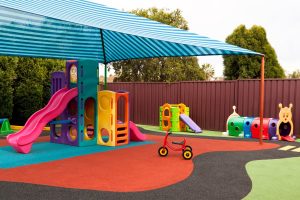

In a time when inclusiveness and diversity are more than just catchphrases, creating playgrounds that meet the needs of all children has become a top priority for local governments all over the world. Beyond just being accessible, inclusive playgrounds provide a rich, multisensory setting where kids of all abilities may interact, play, and develop as a community. This thorough investigation of inclusive playgrounds clarifies the kinds of play equipment and design ideas that promote an atmosphere of fairness, security, and enjoyment for kids of all ages.
From wheelchair-accessible swings to sensory play equipment, these playgrounds are designed to cater to children with physical, sensory, and cognitive disabilities. Inclusive playgrounds also prioritise safety, with rubber surfacing, ramps, and wider pathways to accommodate wheelchairs and prevent injuries. By creating spaces that are welcoming and accommodating to all children, inclusive playground equipment promotes a sense of belonging and equality among all members of the community.
Table of Contents
Inclusive playgrounds are thoughtfully designed spaces that consider the full spectrum of child development and abilities, ensuring every child can participate in play, regardless of their physical or cognitive abilities. These playgrounds are a testament to the belief that play is a universal language that can bridge gaps, teach empathy, and foster friendships among diverse groups of children.
The heart of any inclusive playground is the equipment, which should be carefully selected to accommodate a wide range of needs. Effective playground equipment in these environments serves multiple purposes: it promotes physical activity, stimulates cognitive development, encourages social interaction, and ensures safety and accessibility for children with disabilities.
Equipment should be accessible to children with various disabilities, including those who use wheelchairs or other mobility devices. Ramps, wide platforms, and ground-level play features are crucial for ensuring everyone can reach and enjoy the playground.
Inclusive playgrounds often incorporate equipment that engages different senses, catering to children with sensory processing disorders or autism. Textured surfaces, musical instruments, and visually stimulating play panels can provide a therapeutic and engaging experience.
Offering a range of physical challenges ensures that children of all physical abilities can find activities that are enjoyable and beneficial. This might include low-height structures for climbing, balance beams for coordination, and soft surfaces for safe exploration.
Equipment designed to promote social interaction can help children develop important communication and cooperation skills. Seating areas, cooperative games, and shared play spaces encourage children to play together, regardless of ability.
In any playground, but especially in an inclusive one, safety is of the utmost importance. To ensure that no child is harmed, non-toxic materials, rounded corners, and sturdy, secure constructions are necessary.
Creating an inclusive playground requires thoughtful planning and a commitment to understanding the diverse needs of children. Here are steps to ensure a successful project:
After the playground is in use, continue to solicit feedback and be willing to make adjustments to better serve the community.
Inclusive playground equipment has a profound impact on communities, fostering a sense of belonging and acceptance among children and their families. They serve as powerful examples of how thoughtful design can remove barriers to play, ensuring every child has the opportunity to experience the joy and benefits of outdoor play. Beyond the immediate joy they bring, these playgrounds can instill lifelong values of inclusivity and empathy in children, shaping a more understanding and diverse future generation.
In conclusion, building inclusive playgrounds equipped with thoughtful and accessible playground equipment is not just an investment in a physical space but an investment in a community’s future. These playgrounds symbolise a commitment to equality, demonstrating that every child, regardless of ability, has the right to play, learn, and grow in a supportive environment. As communities continue to embrace the principles of inclusivity and diversity, they pave the way for a more compassionate and accepting society. By providing children with the opportunity to interact and play with peers of all abilities, inclusive playgrounds foster a sense of belonging and understanding. This sense of community acceptance not only benefits the children using the playground, but also sets a positive example for future generations to prioritise inclusivity and empathy in all aspects of life. Ultimately, investing in inclusive playgrounds is a powerful way to shape a more harmonious and equitable society for years to come.
Japan is the ultimate winter ski holiday resort for all the ski enthusiasts. Its breathtaking…
Jordan Chiles, an elite gymnast, made jaws drop when she stepped off the mat and…
Pop star Katy Perry has made it back to Earth safely after an incredible ride…
Your golf cart battery is the lifeblood of your cart's energy. Ignore its maintenance, and…
The tabloids and top news articles may have never covered Kari Hillsman’s life, but her…
Misha Ezratti is a well-known real estate personality who has established himself as the President…